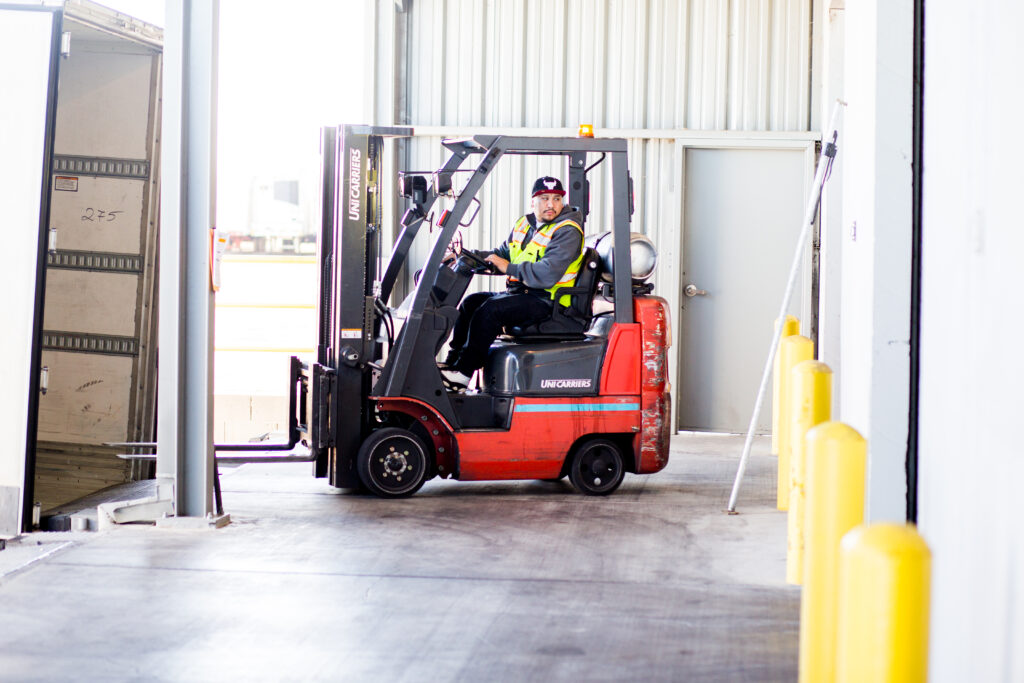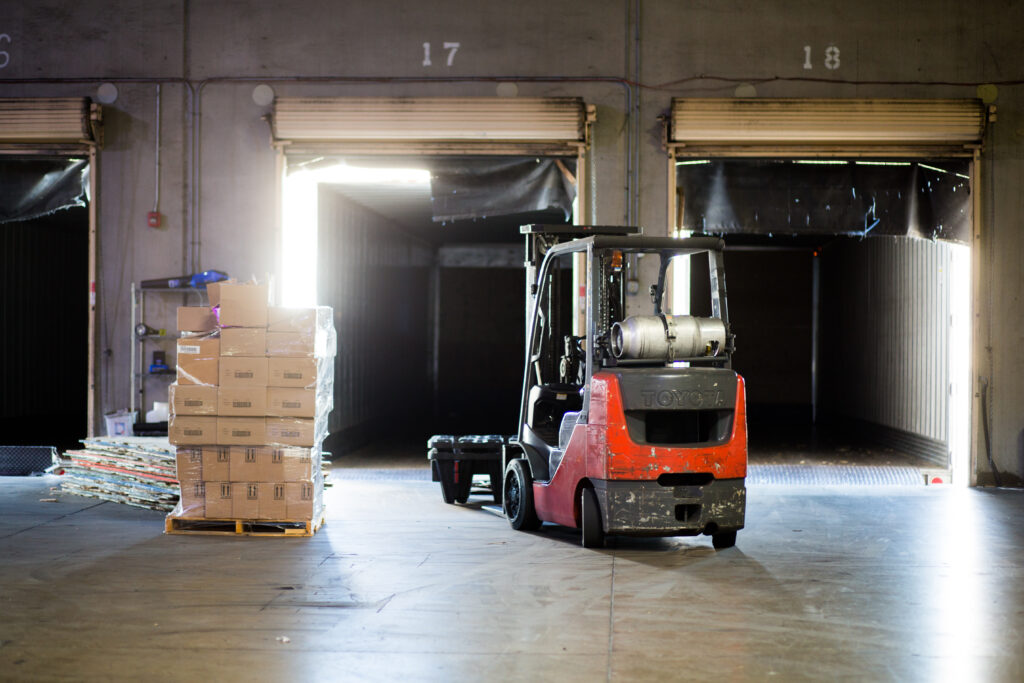
Head of Marketing
Warehouse management is a key factor of success in today’s business world. With the right tools and processes, businesses can ensure optimal inventory control, efficient space usage, and streamlined shipping processes.
Innovative solutions for commercial warehouse management are designed to help businesses gain a competitive edge in their industry. Warehouses are able to maximize efficiency while reducing costs by incorporating modern technology and strategies.
This article will deeply explore some of the best innovative solutions for warehouse management that can help businesses streamline their operations smoothly.
But first, let’s talk about some of the best innovative warehouse management practices before moving forward.

Lean Warehousing is a concept that originates from the Lean Manufacturing movement that has been popularly adopted in recent years as part of warehouse management solutions.
The idea behind lean warehousing is to reduce waste in the warehouse, optimize inventory, and create a process within the warehouse that operates smoothly and with minimal interruptions.
This method allows a warehouse to be more flexible in meeting customer demands while simultaneously reducing costs.
The benefits of lean warehousing are apparent.
Cross-docking is another innovative solution that has become an essential warehouse management practice. The concept involves transferring goods from incoming transport to outgoing transport without keeping the items in the warehouse for extended periods.
Instead, cross-docking allows products to move through the warehouse quickly- thus reducing inventory and lead time. It enables businesses to manage their logistics operations more efficiently by minimizing handling, labor, and storage requirements.
Cross-docking has several benefits that are evident.
“JIT is a philosophy which aims to bring certainty and smoothness to the flow of material through the supply chain, while reducing the WIP, enabling the lowering of stock, and thus reducing the lead time.” –A. Gunasekaran, H.B. Marri, F. Menci
Just-in-Time (JIT) inventory management allows businesses to hold the smallest amount of inventory possible without affecting customer satisfaction significantly.
JIT makes it possible to reduce inventory levels since items arrive at the warehouse only when required. This method is becoming increasingly popular in warehouses that produce fast-moving consumer goods (FMCG).
Automated Storage and Retrieval System (ASRS) is a revolutionary technology that has transformed the way warehouses operate. With ASRS, inventory management has become more efficient, accurate, and cost-effective.
The system uses robotic arms to retrieve items from shelves and deliver them to the desired location, perfect for labor management by eliminating manual labor and reducing the risk of errors.
Autonomous mobile robots (AMRs) are one of the most innovative and exciting technologies in the field of warehouse management. These robots are designed to move around a warehouse autonomously, using advanced sensors and algorithms to navigate their way between shelves and pick up products. With AMRs, warehouses can improve their efficiency, reduce labor costs and increase productivity.
The Internet of Things (IoT) has revolutionized the way warehouses operate. With advanced solutions that allow for real-time monitoring and automation, businesses can optimize their warehouse management processes to streamline operations and increase efficiency.
These solutions are helping warehouses keep up with the ever-increasing demands of modern-day logistics.
The Internet of Things provides businesses with a wide range of benefits that help improve warehouse management processes. Here are some of them:
RFID (Radio-Frequency Identification) is a technology that uses radio waves to transmit data between a tag and a reader. When it comes to warehouse management, RFID technology allows for the automatic tracking and identification of products as they move through the warehouse.
“In supply chain management, it is considered to be the next step since it has the ability to enhance operational efficiency by tracking and tracing goods, sharing real-time information, and can enable total visibility throughout the supply chain. The system includes interrogators (readers or scanners) and transponders (tags).” – Frida Olofsson & Lisa Rylander
RFID technology uses a tag, which can be attached to products or packaging, that contains an antenna and a microchip that can store data.
When the tag comes within range of a reader, the data stored on the microchip is transmitted via radio waves. This allows for real-time tracking and identification of products as they move through the warehouse.
Electronic Data Interchange (EDI) is a crucial tool that can help optimize warehouse management and improve supply chain management by streamlining communication between businesses.
EDI refers to the electronic transfer of data between businesses using a standardized format. This system replaces the traditional method of paper-based communication, which is slower and more prone to errors.
With EDI, businesses can exchange information like purchase orders, invoices, and shipping documents seamlessly and in real time.
EDI is particularly useful for small businesses that don’t have the resources to invest in the latest technology or warehouse space to manage their operations. By integrating EDI into their supply chain management system, businesses can improve their order fulfillment process and provide better services to their customers at a lower cost.
Vertical storage systems have been gaining recognition in the modern age of business management processes. These systems are designed to manage warehouse space, warehouse inventory, and warehouse operations more efficiently.
Vertical storage systems employ the use of vertical carousels or vertical lift modules to store products in a vertical arrangement to maximize space utilization. The vertical carousels work as a rotating shelving system controlled by the operator. The operator inputs the product type and SKU, and the carousel rotates to the right level and delivers the needed product to the operator.
Vertical lift modules function similarly by using an automated vertically lifting elevator-type storage design. The operator inputs the product type and SKU, and the module automatically retrieves the necessary product- saving time and increasing accuracy.
In the world of ever-evolving technology, automated guided vehicles are among the most innovative solutions in commercial warehouse management. Also known as AGVs, these vehicles are designed to support warehouse operations- making it easier to manage and transport goods efficiently.
AGVs cannot be driven by human-like traditional forklifts, as they are autonomously driven by computer systems or over-the-air technology. These vehicles consist of sensors, lasers, and GPS systems that allow them to move safely and accurately throughout the warehouse.
They also operate using an onboard system of algorithms that enables them to navigate around people, products, and other obstacles, all while communicating with other machines in the warehouse.

Pallet racking systems have changed the way we store goods in warehouses and distribution centers. They are versatile and durable and allow for easy access to stored products. As one of the leading storage innovations, pallet racking systems provide a cost-effective solution for businesses looking to increase their storage capacity.
When it comes to choosing a pallet racking system, there are several factors to consider- including the type of product being stored, available space, and weight restrictions all play a role in selecting the right system.
There are different types of pallet racking systems- including selective, drive-in/drive-thru, push-back, and standard adjustable racks. Each system has unique features that cater to specific storage needs.
Managing a commercial warehouse is complex and requires various tools to keep everything running smoothly. “A common solution to the complexities that arise within an e-commerce or omni-channel environment is the implementation of a warehouse management system (WMS). McCrea (2019) describes a WMS as a “traffic cop” providing inventory visibility while gathering actionable data analytics for companies to utilize.” – Nicholas J. Cross
A WMS is a software application that helps businesses manage and optimize their warehouse operations. These systems can handle everything from inventory control, shipping, and receiving to storage, picking, and packing.
Additionally, a WMS can track orders, manage returns, and keep an eye on the productivity of your employees. One example of software that can help businesses with their supply chain management is Blue Yonder.
At FDR Warehouse, we offer cutting-edge technology and innovative solutions to ensure that you receive the best warehouse management experience possible.
Innovative transportation management software solutions have transformed the way businesses handle transportation in the supply chain management process. TMS offers efficient tools for managing and optimizing the entire transportation process- from order planning to product delivery.
Transportation Management System (TMS) is an innovative software solution that helps businesses fulfill their orders effectively and efficiently.
This software is designed to manage transportation operations- including carrier selection, freight audit and payment, route planning, and dock scheduling.
TMS streamlines the supply chain process by providing a centralized platform for managing all aspects of transportation management from start to finish.
Managing a commercial warehouse requires a lot of resources and planning. Enterprise Resource Planning (ERP) provides advanced tools to help businesses effectively manage their warehouse operations.
Enterprise Resource Planning (ERP) refers to software systems designed to manage and integrate various business processes, such as inventory management, financial management, and human resources management.
ERP offers real-time tracking and analysis of business processes- enabling businesses to make informed decisions.
In the context of commercial warehouse management, ERP solutions provide a unified platform for optimizing warehouse operations, streamlining supply chain management, and enhancing customer satisfaction.
Need a reliable partner for your commercial warehousing and logistics services? FDR Warehouse, located in Stockton, CA, offers flexible and scalable solutions to meet unique business needs.
We provide short and long-term freight storage, cross-docking, dispatching, local transportation, and value-added services like palletizing, barcoding, labeling, drainage, and shrink wrapping.
Our focus on scalability, flexibility, and efficiency has made them Stockton’s best warehousing and logistics company- providing commercial storage solutions for businesses of all sizes.
The FDR team is available 24/7 to answer any questions, resolve issues, or help with any needs. Conveniently located close to the Union Pacific and BNSF railways, I-5, Highway 99, and Highway 4, and Port of Oakland and Port of Stockton, FDR Warehouse can easily transport your goods anywhere in the USA.
With two facilities located in Stockton, California, we offer warehousing and logistics services tailored to your needs. We have extensive warehouse floor space with safe racks that are under constant surveillance- ensuring the safety of your commercial goods.
FDR Warehouse customizes solutions to meet each client’s unique requirements- ensuring a seamless supply chain process. We also offer cost-effective solutions, streamlining the transportation process and reducing warehousing costs. Our efficient processing solutions ensure products are quickly dispatched and received, increasing supply chain efficiency.
Are you interested in exploring FDR’s commercial storage solutions? Schedule a time on our calendar or request a quote online or by calling (209) 780-5042. And discover why FDR Warehouse is the partner you need for innovative commercial warehouse management.